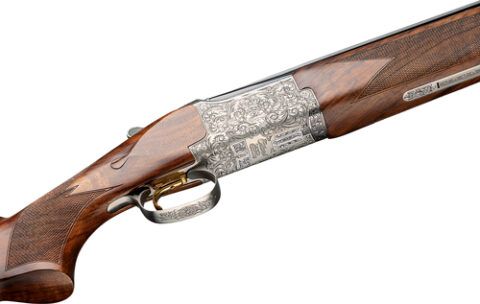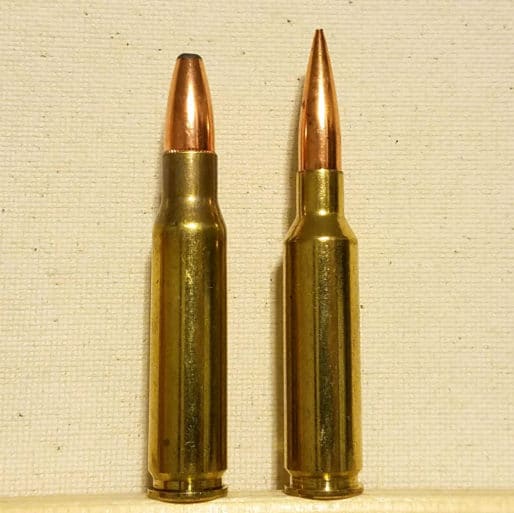When it comes to picking the perfect caliber for long-range shooting and hunting, the showdown between .308 Winchester and 6.5 Creedmoor is like the ultimate clash of the titans. Both cartridges have their own fan clubs and can deliver impressive results, but which one is right for you? Let’s break it down and help you figure it out!
.308 Winchester: The Old-School Heavyweight
Ballistics and Performance:
- Muzzle Velocity: A typical .308 Winchester round, like a 168-grain match bullet, clocks in around 2,650 feet per second (fps).
- Energy: We’re talking about 2,620 foot-pounds (ft-lbs) of energy at the muzzle.
- Drop at 1,000 Yards: With a 100-yard zero, a 168-grain .308 bullet will drop roughly 400 inches at 1,000 yards.
- Wind Drift: With a 10 mph crosswind, expect about 60 inches of drift at 1,000 yards.
Pros:
- Versatility: The .308 Winchester is highly versatile. Whether you’re hunting deer or taking down an elk, this round can do it all.
- Availability: You can find .308 ammo pretty much anywhere, from big box stores to local shops.
- Cost: Generally, .308 ammo is affordable, making it a cost-effective option for frequent shooters.
- Proven Performance: This round has a long history with the military and law enforcement, demonstrating reliability and effectiveness.
Cons:
- Ballistic Coefficient: The .308 isn’t the most aerodynamically efficient. It drops and drifts more than its competition.
- Recoil: The .308 packs a heavier recoil, which can impact shooter comfort and follow-up shot accuracy.
6.5 Creedmoor: The New Kid on the Block
Background and Development: The 6.5 Creedmoor was developed by Hornady and introduced in 2007. It was designed specifically for long-range target shooting, with input from competitive shooters. The goal was to create a cartridge that could fit in a short-action rifle while providing exceptional accuracy, ballistic performance, and reduced recoil. Its popularity quickly grew beyond the competitive shooting world as hunters and tactical shooters began to appreciate its advantages.
Ballistics and Performance:
- Muzzle Velocity: A typical 6.5 Creedmoor round, like a 140-grain match bullet, flies at about 2,700 fps.
- Energy: It delivers around 2,283 ft-lbs of energy at the muzzle.
- Drop at 1,000 Yards: With a 100-yard zero, a 140-grain 6.5 Creedmoor bullet drops around 291 inches at 1,000 yards.
- Wind Drift: With a 10 mph crosswind, the drift at 1,000 yards is about 50 inches.
Pros:
- Ballistic Performance: The 6.5 Creedmoor excels in ballistic performance with a high ballistic coefficient, making it ideal for long-range precision.
- Recoil: This round has a softer recoil, making it easier on the shooter and allowing for quicker follow-up shots.
- Accuracy: Designed for accuracy, the 6.5 Creedmoor is a favorite among competitive shooters and long-range enthusiasts.
- Hunting Efficiency: For medium-sized game like deer and pronghorn, the 6.5 Creedmoor provides excellent penetration and energy transfer.
Cons:
- Availability: While it’s gaining popularity, 6.5 Creedmoor ammo isn’t as widely available as .308. Sometimes you have to search a bit more.
- Cost: It’s generally more expensive than .308, which might be a consideration for budget-conscious shooters.
Why USSOCOM Chose the 6.5 Creedmoor
In 2018, the U.S. Special Operations Command (USSOCOM) decided to adopt the 6.5 Creedmoor for its sniper systems, replacing the .308 Winchester. This decision was based on several key factors:
- Extended Range: The 6.5 Creedmoor’s superior ballistic coefficient allows for more accurate and effective engagements at extended ranges.
- Reduced Wind Drift: Less wind drift means better accuracy in challenging conditions.
- Improved Terminal Ballistics: The 6.5 Creedmoor provides better energy retention at longer distances, ensuring reliable terminal performance.
- Lower Recoil: The reduced recoil of the 6.5 Creedmoor allows snipers to maintain better situational awareness and make quicker follow-up shots if necessary.
Long-Range Shooting: The Verdict
For long-range shooting out to 1,000 yards, the 6.5 Creedmoor has a clear advantage due to its higher ballistic coefficient and lower recoil, which contribute to better accuracy and ease of shooting. Competitive shooters and precision rifle enthusiasts often prefer the 6.5 Creedmoor for these reasons.
Hunting: The Verdict
When it comes to hunting at closer distances, both calibers have their merits. The .308 Winchester’s versatility and power make it an excellent choice for larger game and a variety of hunting scenarios. However, for those who prioritize lower recoil and superior long-range performance, the 6.5 Creedmoor offers a compelling alternative, especially for medium-sized game.
Conclusion
Ultimately, the choice between .308 Winchester and 6.5 Creedmoor depends on your specific needs and preferences. If you’re looking for a versatile, time-tested round with widespread availability, the .308 Winchester is a solid choice. If your focus is on long-range precision and reduced recoil, the 6.5 Creedmoor is hard to beat. Both calibers have their place in the shooting and hunting world, and understanding their strengths and weaknesses will help you make an informed decision for your next adventure.
By weighing the pros and cons of each caliber and considering specific ballistic details, you can better determine which one aligns with your shooting and hunting goals. Whether you choose the .308 Winchester or the 6.5 Creedmoor, both offer exceptional performance that will serve you well in the field and at the range.
BROWNING CITORI LAREDO – SPORTING 12GA 3″ 32″ BLD/WLNT
BROWNING CITORI LAREDO - SPORTING 12GA 3" 32" BLD/WLNT
WINCHESTER MODEL 1873 DELUXE – SPORTER 357/38SP BLUED/WALNUT
WINCHESTER MODEL 1873 DELUXE - SPORTER 357/38SP BLUED/WALNUT

